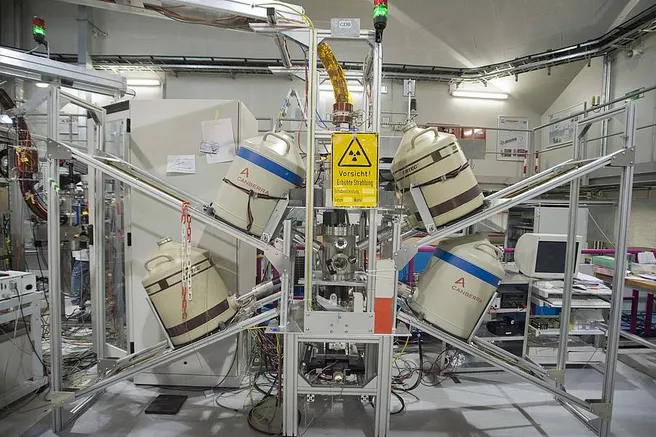Despite their hardness nano crystalline metals can be plastically deformed. Therefore, researchers like the material scientist Prof. Dr. Roland Würschum are very interested in those materials. The mechanical properties of these metals can be improved considerably by severe plastic deformation. During this process –torsion under high pressure– different types of defects occur on the atomic scale, which lead to the superior features of the produced material.
The material scientists from Graz aimed to understand these defects with their positive influence on the material’s features. For this reason, they asked Dr. Christoph Hugenschmidt, instrument scientist at the positron source NEPOMUC of the FRM II. “In Garching we offer the necessary high intensity of positrons”, says Christoph Hugenschmidt. The measurements at elevated temperatures can be performed on a minutes’ time scale due to the high positron intensity, which offers almost a billion positrons per second.
The atomic defects in the metals were made visible with the so-called positron annihilation spectroscopy: Positrons from the FRM II annihilate with the negatively charged electrons in the material, and hence the two particles convert into gamma irradiation. If the annihilation occurs in lattice defects, the measured gamma radiation spectrum changes characteristically. Thus, positrons reliably report, where the defects are located within the material.
Additionally, the scientists from TU Graz analysed the metals with a complementary method. Combining the two methods, they could prove that the defects really cause the improved mechanically features of the material.
Original publication:
In situ probing of fast defect annealing in Cu and Ni with a high-intensity positron beam. 10.1103/PhysRevLett.105.146101.
